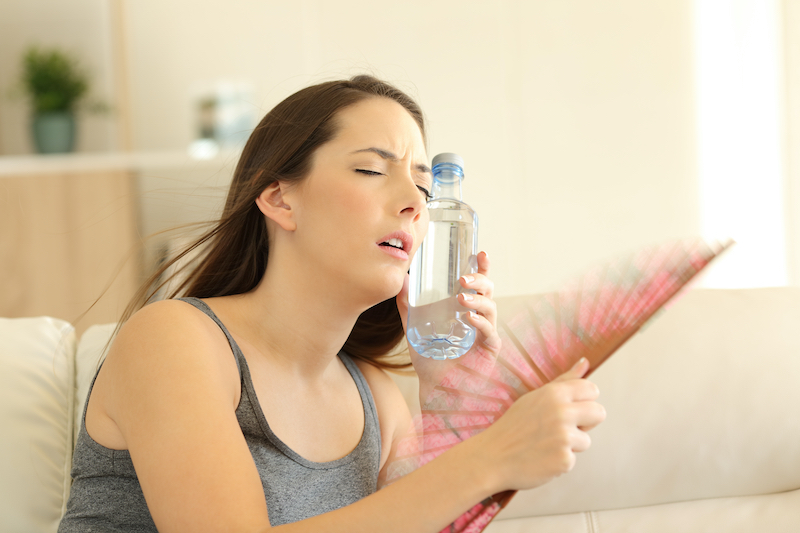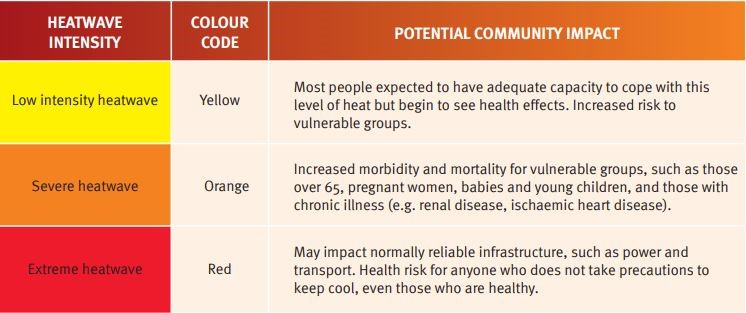


According to Queensland Health, extreme summer heatwaves can cause more deaths than bushfires, cyclones, earthquakes, floods and thunderstorms combined. They can trigger heat exhaustion and even heatstroke, a major heat-related illness that can put many at risk of fatality if not treated early.
As Queenslanders, we’re used to some serious sweating. But as the mercury soars to levels more extreme than usual, we’re in danger of severe health risks that go beyond a trickle of sweat.
Heat-related illness
The human body is designed to regulate high temperatures in its external environment through sweating, a bodily function that causes millions of eccrine glands to spread out across the body, allowing heat loss through evaporation. This process is effective, until the body is faced with more heat than it can handle and for long periods of time. The body is unable to cool down which can cause an array of health-related issues.
Not everyone reacts the same way
Heat varies from person to person and is influenced by an individual’s general health, body weight, age, level of fitness and prescription and/or illicit drug use. Anyone is at risk of heat-related issues, but those most vulnerable include infants and young children, people aged 65 and over, pregnant and breastfeeding women, people with chronic illnesses or diseases, and those who are overweight or obese.
Spotting the signs of heat exhaustion
Luckily, there are many common and obvious signs of heat exhaustion, that when accounted for early can be relieved and managed. The most common indicators to look for include:
- Profuse sweating
- Fatigue/exhaustion
- Headaches or dizziness
- Muscle cramps
- Pale skin
- Nausea or vomiting
- Rapid heart rate
Those with chronic health conditions such as heart disease, diabetes, kidney disease or high blood pressure should seek medical help right away if these symptoms are present. Spotting the signs early helps to lower the risk of more serious complications such as heatstroke. If signs of heat exhaustion are evident, move victims to a shaded and cool area, apply wet towels to the body and provide drinking water.



Retrieved from: https://www.disaster.qld.gov.au/dmp/Documents/QFES-Heatwave-Risk-Assessement.pdf
What is heatstroke?
Heatstroke usually occurs due to prolonged and intense exposure to severely high temperatures and commonly arises when heat exhaustion has not been treated properly. This illness is generally evident when the body reaches a soaring 40 degrees Celsius or higher. Severe symptoms of heat stroke include:
- Pale, red or dry skin (sometimes the sweating will actually stop)
- Difficulty walking
- Throbbing headaches
- Dilated pupils
- Rapid, shallow breathing
- Uncharacteristic behaviour
- Vomiting
- Seizures
- Unconsciousness
If the most serious symptoms occur, House Call Doctor recommends that you seek immediate medical attention. Doctors can diagnose the impact of heat through a range of tests. Generally, they will start by taking your rectal temperature to note your core body temperature. They may also perform a blood test to check blood sodium or potassium which indicates the state of your central nervous system, a urine test to determine kidney function, muscle-function tests to see if damage has been made to muscle tissue, and even an x-ray to note any impact on your internal organs.
If results show the need for immediate treatment, your doctor may immerse you in cold water or use evaporation cooling techniques to lower the body’s temperature. More serious measures may then be taken to treat more serious matters.
Staying safe during heatwaves
Heat-related illness can be prevented when you know your risk and are prepared. Remember to stay out of the heat as much as possible, remain hydrated, ensure the air around you is circulating, rest often and try to exercise in the cooler parts of the day. It’s also important to avoid sun damage as this can exaggerate and prolong heat exhaustion. Cover up with weather-appropriate clothing, sunscreen and sunglasses to protect your skin and eyes.
Be aware of the weather by checking the forecast each morning. This will help you plan ahead for outdoor activities like shopping, exercise and other appointments. Identify people within your support network who can help with certain tasks on hot days, particularly if you have a family to care for or your job takes place outdoors.
Make sure to constantly monitor for signs of heat-related illness and act promptly. Keep an eye on people around you, especially those who fall under the high-risk categories.




